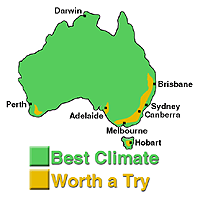Native to tropical America, bromeliads are members of the Bromeliaceae, or pineapple family. These plants come in a wonderful variety of sizes, shapes and foliage colours, and many of them are epiphytes. In other words they live up in the forks of tree branches and exist mainly on the moisture and nutrients they obtain from the air. Some bromeliads make very good indoor plants, while others can be quite spectacular grown in the garden.
Frogs often live in the central well area of bromeliads and their tadpoles develop there. A fascinating example is the Poison Arrow or Poison Dart Frog, which secretes the most potent skin toxin among amphibians. They are found in certain areas of Colombia, where local people have been known to catch them and use their skin secretions to tip blow gun darts.
Commonly grown genera:
Aechmea: The plants in this genus are mostly epiphytic. One of the best known is Aechmea fasciata or ‘Silver King’, which has long lasting, pretty pink flowers and is often used as an indoor plant.
Ananas: The commercially grown pineapple, Ananas comosus is a member of this genus.
Billbergia: There are around 60 species of Billbergia, which are colourful and well suited to growing in the garden around the base of trees. They clump up quickly to form good flower displays, although the inflorescence on some species is short lived.
Cryptanthus: This is a terrestrial group from Brazil which needs plenty of room for root development. They are best suited to warm climates.
Neoregelias and their many hybrids are very colourful and easy to grow. They are epiphytic bromeliads which have blue or white flowers, and various red spots and markings on the leaves.
Tillandsia: True air plants, tillandsias range in size from the tiny T. bryoides (1cm or 0.394″) to the giant T. grandis which can grow up to 3 metres (3′) tall. Also in this group is T. usneoides, commonly known as old man’s whiskers or Spanish moss, which looks like spider webs hanging from the trees. Apart from its ornamental uses, this material can be used for padding in upholstery.
Vriesea: Plants in this genus have interesting and varied foliage, and sword like eye-catching flowers. They are easy to grow and are good bromeliads for beginners to try.
Best climate:
Bromeliads are hardy plants which can be grown outdoors in most areas of Australia. They’re also worth a try in mountain regions but they may need protection from cold.
Care:
Bromeliads require a light open mix, with good drainage. Don used about two parts of a standard orchid compost to about one part of ordinary potting mix, with a little bit of charcoal added as well. You can add a little Osmocote to the mix. When potting don’t forget that the leaves hold water, so it’s important to keep the central cup upright. For the home gardener, division is the easiest method of propagation. Wait until the offsets or pups are about 15cm (6″) in size and cut them away from the mother plant with a sharp knife. Bromeliads don’t require much fertilizer; in fact too much could kill them. Don suggests mixing Campbell’s Yellow Orchid Fertilizer at the standard rate for orchids, and spraying to run off point over the leaves every couple of months. Or you could use half strength Aquasol or Thrive. Aechmea, Neoregelia and Vriesea are good indoor plants, but they need a spell outdoors every now and again when they start to look tired.
Getting started:
Bromeliads are available from most nurseries, or they can be ordered in. They range in price from about $10-$30. Campbell’s Yellow Orchid Fertilizer is available at nurseries and hardware stores, rrp $10.95. For more information about bromeliads you can contact the Bromeliad Society of Australia, PO Box 340, Ryde, NSW, 2112.
Further information
Bromeliad Society of NSW, Autumn Show will be held on Saturday and Sunday, April 17-18 at Drummoyne Community Centre, 422 Lyons Road, Five Dock, NSW.



